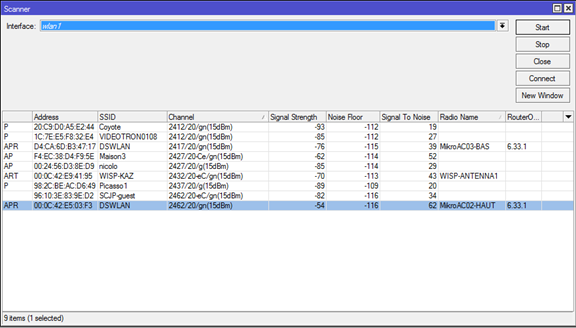Post-WiFi part1
Wi-Fi’s problems, part 1
Hello all,
With handheld devices (laptops, cell phones, and tablets), we appreciate having access to the Internet anywhere and anytime. So we buy an AP and install it. That’s wonderful!
We notice a lack of Wi-Fi coverage in some parts of the house and add a second AP. Strangely enough, the result is hardly better.
We then add a third, and the results look worse. We then wonder; the signal is strong and clear everywhere?
And there lies the problem; it is too strong. Also, you are not alone who’s deploying the same technology. Your neighbours also want in and from then on, their technology invades your home and impedes your technology. What are we to do?
The first thing is to use the tools we have on our routers. Namely, “Scan” and “Spectral-history”.
By the way, if you have a router that just sitting there, use it. First, you do not need the hate of your family by cutting Wi-Fi access with your tests. Second, why run tests if you no longer see your own network? How will you analyze it?
With “Scan”, we look at:
- The frequencies used (Channel).
- It is important to choose one that is not overly used (totally available would be great). However, take frequencies that do not overlap. With two routers, it’s not so bad, but with three, the only choices are channels 1, 6 and 11.
- The strength of the signal (Signal Strength).
- This is where everyone gets caught! Too strong is really bad. A signal level considered to be excellent is around -67dBm (according to inssider.com). This threshold will vary depending on your equipment’s sensitivity and atmospheric conditions.
- The noise level (Noise Floor).
- Basic noise, such as microwave ovens, DECT phones and Bluetooth devices. The smaller the value (such as -115 versus -20), the better.
- The signal-to-noise ratio (Signal to noise).
- It’s the difference between “Signal Strength” and “Noise Floor“. The higher the value (such as 57 versus 20), the better.
In my next post, I’ll talk about “Spectral-history” and how it is used.
Best regards,
